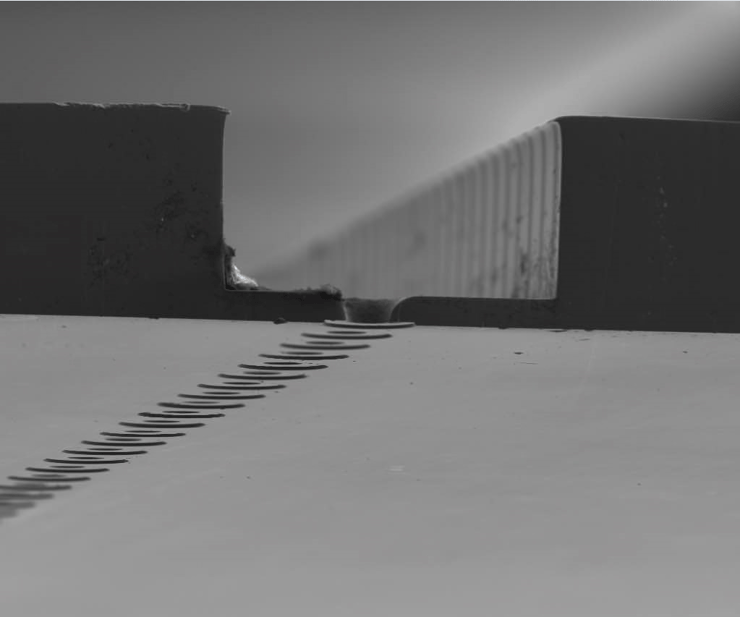Additive manufacturing (AM) refers to manufacturing methods that build up 3D objects by adding materials layer upon layer. Objects manufactured can be of almost any shape or geometry. Materials used can be metal, (thermo)plastic, ceramic, or sometimes…..chocolate.

You can see additive manufacturing as a ‘from-the-bottom-up’ method. It is also referred as:
- Additive layer manufacturing
- Layer manufacturing
- Additive fabrication
- Additive processes
- Additive techniques
Common additive manufacturing methods include:
- Electroforming
- 3D printing
- Material jetting
- Powder Bed Fusion
- Sheet lamination
- Binder jetting
- Material extrusion
- Directed Energy Deposition (DED)
- VAT Photopolymerisation
Subtractive manufacturing
Additive manufacturing is the opposite to subtractive manufacturing, a manufacturing method that entails the removal of materials to produce a component.
You can look at subtractive manufacturing as a ‘from the top down’ method. Common subtractive manufacturing methods include:
- Chemical etching (also known as photo etching, chemical milling, industrial etching, etc.)
- Laser cutting
- CNC machining
- (micro) Punching
Industries where additive manufacturing is applied
Additive manufacturing is widely applied in various industries:
- Aerospace
- Automative
- Medical systems
- Tooling
- Printing
- Pharmaceutical
- Chemical; oil and gas
- Semiconductor equipment
- Food processing
Benefits of additive manufacturing
Low cost sampling and design freedom
Additive manufacturing enables great flexibility and design freedom. In other manufacturing processes such as milling, production costs are closely linked to the complexity of the part. Additive manufacturing, on the other hand, is perfect for low cost production as well as small and (very) large industrialization, because complexity of the part has limited or no influence on manufacturing time and costs. Design changes can be implemented quickly and at low cost.
Accelerating lead time
In every single high precision metal process, a mold (in some industries referred to as a die or a mandrel) needs to be made. Time and cost to create this mold vary per technology. In stamping, for example, it may take up to months to build a die. In CNC Punching, a die is available within days to weeks. In Electroforming, a mandrel can be ready within hours. Needless to say, reduced lead time from several months to several days will reduce costs significantly.
Less material waste
Unlike subtractive methods like chemical etching, metal objects are built up atom by atom when using additive manufacturing. This means, you use almost every piece of metal with almost zero waste of material. Reduced material wastage with additive manufacturing is of essential importance in cost reduction.
Lower assembly costs
In additive manufacturing, the complex form of component parts can be a single piece. It may replace something that is currently — with conventional high precision metal forming techniques — an assembly of multiple pieces. All the extra features that are required for the assembly, such as fasteners, brazing or welding, can be eliminated when using additive manufacturing.
Cheap mold-making from a CAD file with a Laser Direct Imager
Some manufacturing companies use a Laser Direct Imager to create molds for production. How does the LDI work?
In electroforming, a mandrel is made with photolithography, which means applying geometric pattern to a sensitive resist on a substrate by the means of light. Usually, this is done by placing a mask on a photoresist layer and exposing light to the entire mask. Production costs for this glass mask can be approx. 5000 dollars. The Laser Direct Imager is capable of projecting images directly from a CAD file with sub-micrometer resolution. In other words, photomasks have become redundant with the Laser Direct Imager, which significantly reduces costs and shortens lead time.
Note: photolithography is also applied in the chemical etching process, which is a subtractive method.
Electroforming: a highly cost-effective additive manufacturing method
One way to achieve cost reduction in manufacturing is through electroforming. It is an established additive manufacturing process to create ultra high precision metal parts.
Electroforming process also allows for precise duplication of the mold. High resolution of the conductive patterned substrate allows finer geometries, tighter tolerances and superior edge definition. This leads to perfect process control, high quality production and high repeatability. Therefore, electroforming is perfect for high volume precision production with high quality and low costs.
Learn more about electroforming and how it can drive innovation for your business. Read the electroforming whitepaper:

